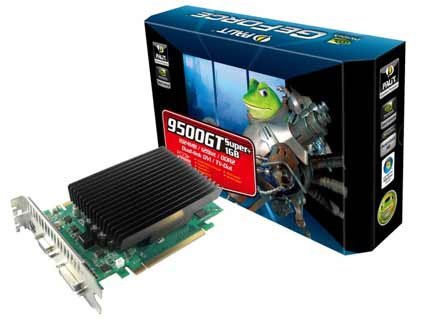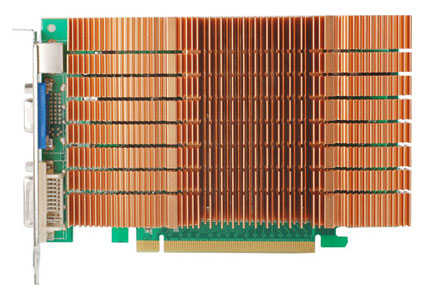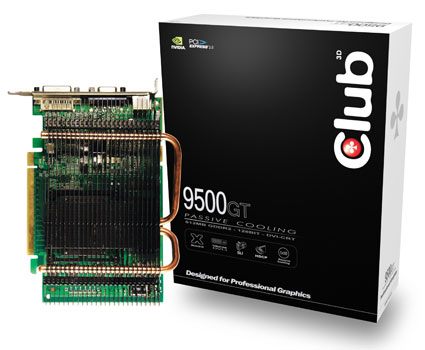NVIDIA rather quietly rolled out its GeForce 9800 GT and GeForce 9500 GT graphics cards yesterday. Those who noticed the launch may have found that the GeForce 9500 GT could be a useful graphics card for the home-theatre PC (HTPC).
NVIDIA's reference specification for the GeForce 9500 GT lists a 550MHz GPU and effective memory speeds of 1,600MHz (GDDR3) and 1,000MHz (DDR2). With a 128bit memory interface and 32 stream processors, the card offers adequate performance in the sub-£80 bracket. Not quite as quick as a passive Radeon HD 3850 mind you, but hey, this is about NVIDIA.
Find a passively-cooled GeForce 9500 GT, and you could be looking at a tasty HTPC solution. If, however, you just can't be bothered to look, take a glance at a selection that we've already come across:
Palit GeForce 9500 GT

Palit's passive offering comes in the form of three dual-slot models; the Palit GeForce 9500 GT SUPER 512MB GDDR2, the Palit GeForce 9500 GT SUPER+ 1GB GDDR2 and the Palit GeForce 9500 GT 256MB.
Each card features a reference GPU clock of 550MHz, and the DDR2 models feature slower memory speeds of 800MHz. The 256MB GDDR3 model has memory set at the default 1,600MHz.
BIOSTAR GeForce 9500 GT (V9502GT51)

BIOSTAR's passive 9500 GT, pictured above, features a 550MHz GPU clock and 512MB of DDR2 at the standard effective speed of 1,000MHz.
Club3D 9500 GT Passive Heatpipe

Club3D's card takes the cooling a little further with the addition of a pair of heatpipes - low profile chassis be aware. The card's speed matches that of the BIOSTAR alternative, there's a 550MHz GPU and 512MB of DDR2 running at 1,000MHz.
There will no doubt be plenty more passive 9500 GTs in the near future, but these are a start. With NVIDIA's new SKUs being announced the day before yesterday, availability is still limited. We've yet to find any of the above in stock at some of the UK's largest e-tailers, but we expect the cards to land at around £60 - £80.













